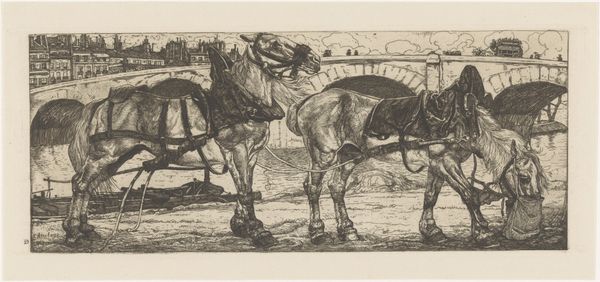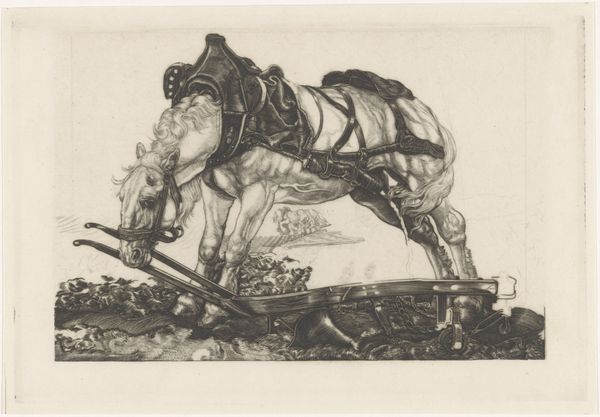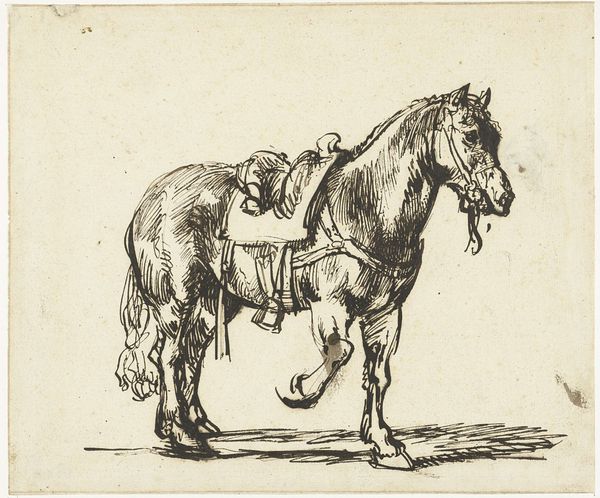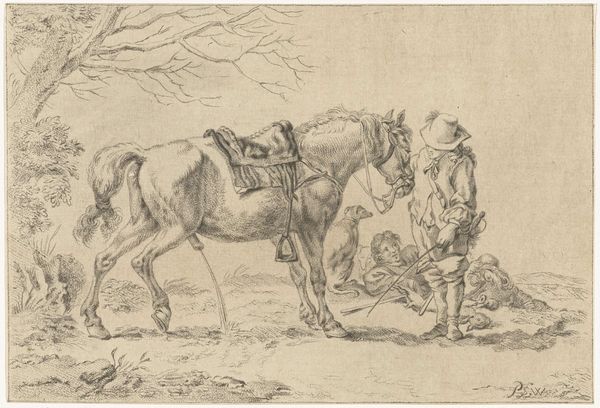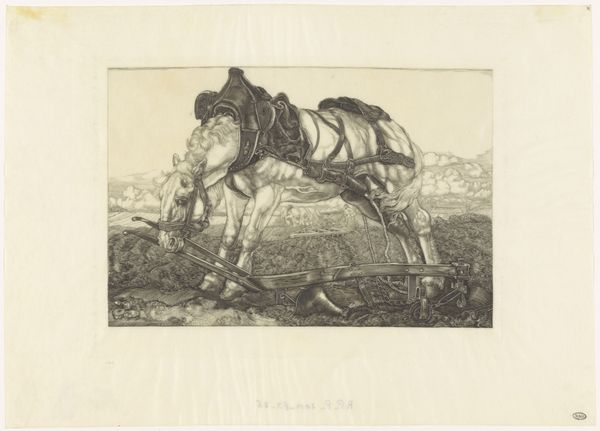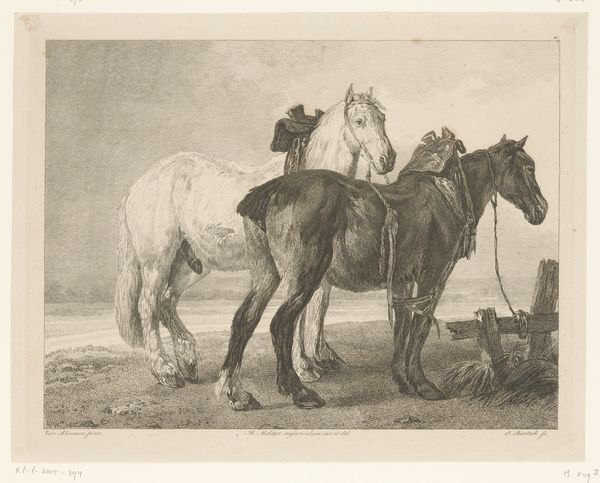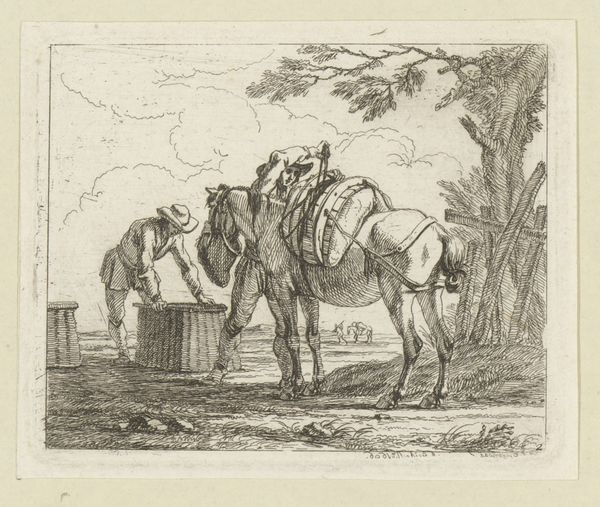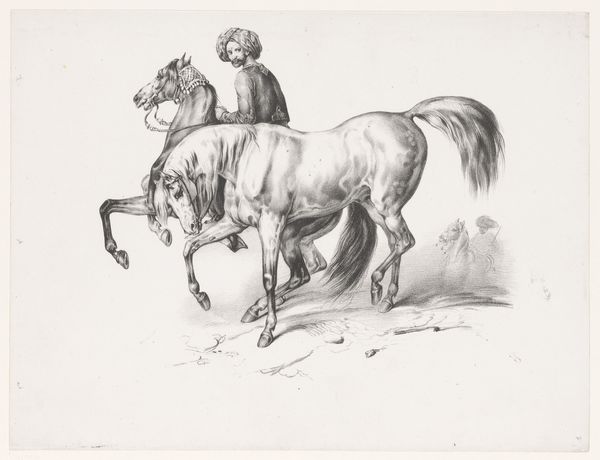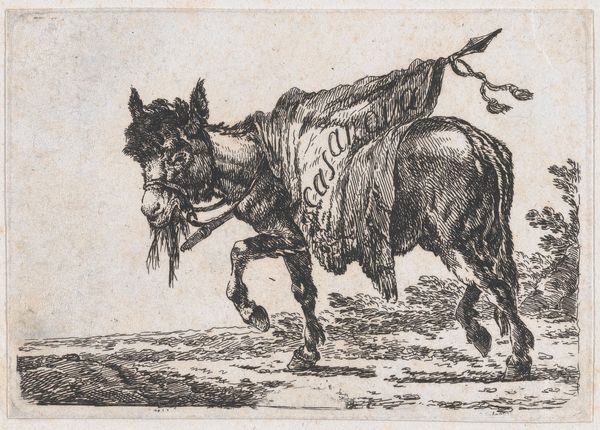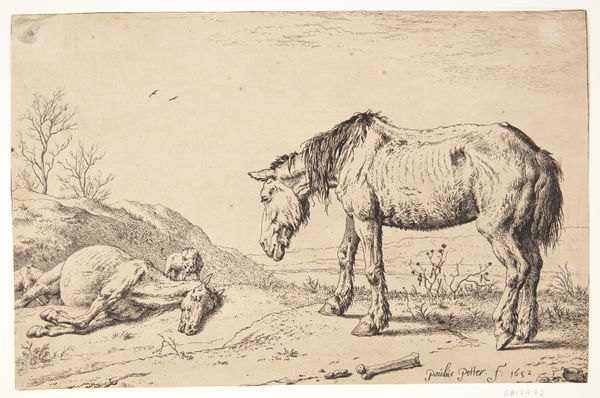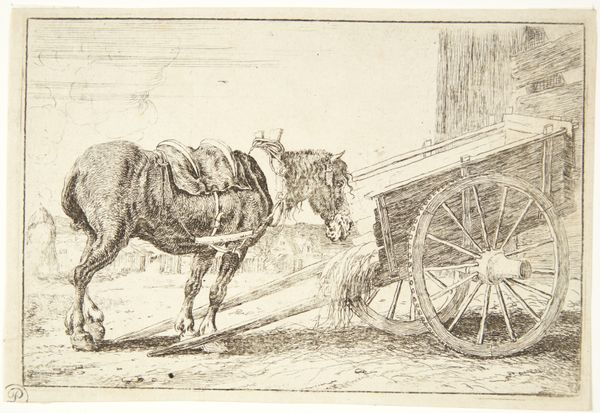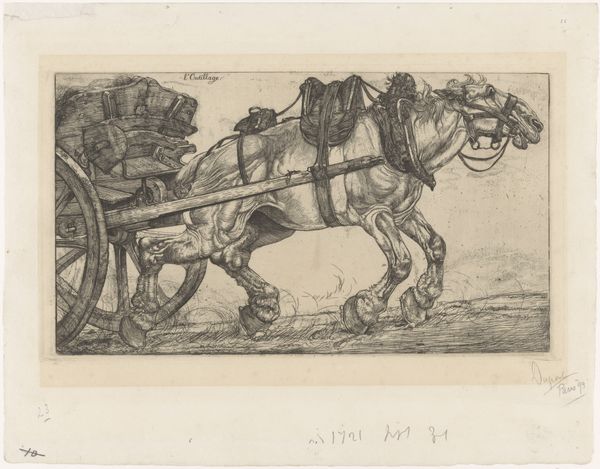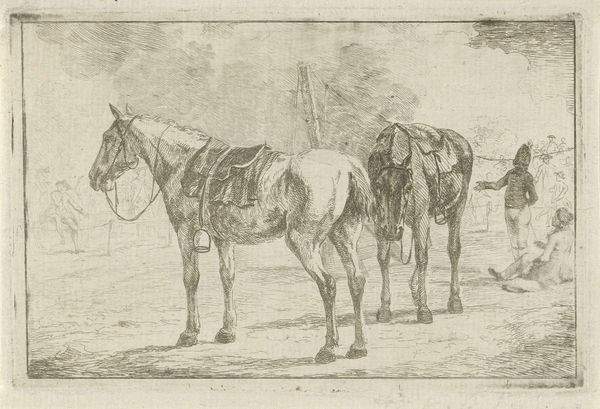
drawing, print, etching
#
drawing
#
animal
# print
#
etching
#
landscape
#
horse
#
line
#
realism
Dimensions: height 160 mm, width 217 mm
Copyright: Rijks Museum: Open Domain
Editor: So this etching, “Twee jaagpaarden langs de Marne,” or "Two Tow Horses on the Marne" by Pieter Dupont from around 1900, has quite a stark feel, I think. The line work really emphasizes the weight and labor of these animals. What’s your take? Curator: The emphasis on line and the reproductive nature of the print immediately bring to mind questions of labor – both the horses' and the artist's. Etching, as a medium, involves a complex, almost industrial, process. Consider how this contrasts with the pastoral subject matter. Editor: Right! It’s like this very…mechanical process is used to depict this traditional, almost pre-industrial scene of horses towing something. Does that tension reflect broader social changes at the time? Curator: Precisely. The etching process itself, using acid and metal, mirrors the industrial processes rapidly transforming society at the turn of the century. Are these horses depicted romantically or realistically? Editor: Realistically, I think. There's nothing idealized here, which maybe underscores the raw physical exertion involved in their work. Almost like…the printing process captures and displays the labour and material circumstance present in the lives of these horses. Curator: An insightful interpretation. Consider the market for prints at this time; the way an image like this, multiplied and distributed, also becomes a commodity itself, circulated amongst a public with its own material concerns. The labor continues through production and then consumption, creating a cycle with social significance. Editor: So much to think about beyond just the image itself. Considering production methods and social context really opened my eyes to new layers in the work. Curator: Indeed. By understanding the conditions of production and consumption, we gain a richer appreciation for how art reflects, and is embedded within, its time.
Comments
No comments
Be the first to comment and join the conversation on the ultimate creative platform.

